ARLINGTON, Va. (Army News Service, Oct. 25, 2010) -- More than 50 wounded, visually impaired and amputee athletes signed up for the 2010 Army Ten-Miler Sunday, competing against each other in categories of their own for the first time.
The largest 10-mile road race in the world attracted 30,000 American and international runners, and although participants with injuries have participated in past years, the growing number of wounded servicemembers interested in the race spurred the creation of their own division.
"The ATM is moving in the right direction," said Capt. Ivan Castro, a blind Soldier who has been encouraging fellow blind runners to join him in races such as the Ten-Miler.
Castro lost all of his vision four years ago when two mortars exploded nearby his position in Iraq. Sunday was his fourth Ten-Miler, and he's also completed a dozen marathons, not including a 50-mile run earlier this year and a 400-mile bike course.
He now serves as a recruiter for Special Operations Command and spends time mentoring Soldiers who return from theater visually impaired. He not only encourages them to compete, but also advocates special categories for blind athletes in sporting events.
"I let them know that life is not over," Castro said. "With the right attitude and training and with the right technology, there's nothing that can't be done."
Another visually-impaired runner, Capt. Joe Bogart, was one of three wounded warriors with limited sight who competed in the race Sunday.
An Improvised Explosive Device destroyed one of his eyes and injured his other while on a deployment in Iraq. Yet Bogart now commands C Company, 35th Engineers at Fort Leonard Wood, Mo., and last year completed a second tour in Iraq.
Bogart said he lost his guide after the first mile of the race and completed the last nine miles on his own.
Even recent surgeries couldnAca,!a,,ct keep one female Soldier off the track.
1st Lt. Bergan Flannigan of Tupper Lake, N.Y., was the second woman to finish in the hand-cycle category with a time of 1 hour, 1 minute and 54 seconds. Flannigan, who underwent three surgeries just three weeks ago, lost her right leg to an IED strapped to a motorcycle in February.
On a presence patrol in Kandahar, Afghanistan, Flannigan said she was walking through a market when she was hit.
Aca,!A"He waited for me to walk by, and then he detonated it," Flannigan said of the man responsible for her injury.
"After the blast happened, I couldn't hear anything, it was just a ringing noise. Finally, when I actually came to, I was lying on the ground, and I finally felt it ... I was just screaming for the medic."
Flannigan said that when she realized sheAca,!a,,cd been injured, her first thought was that she was going to bleed to death.
"I didn't really know the extent of the injury, I was just waiting to die. Then I realized that I was not going to die, but when they picked me up, I saw my foot drop and I knew that leg was probably gone," she explained.
FlanniganAca,!a,,cs husband Thomas, also a first lieutenant, was deployed in Afghanistan with Flannigan, and actually answered the telephone call for FlanniganAca,!a,,cs medical evacuation.
Aca,!A"He didnAca,!a,,ct know it was me, but he knew it was my platoon,Aca,!A? Flannigan said of her husband taking the tragic call. Aca,!A"He said it was the scariest thing he ever went through.Aca,!A?
Flannigan was evacuated to Germany and then to Walter Reed Army Medical Center where she began rehabilitation and was fitted with a prosthetic within a few months.
Aca,!A"It was kind of weird at first,Aca,!A? she said of learning to walk with a prosthetic. Flannigan explained that she still experiences a lot of pain Aca,!"- both genuine and phantom.
It was one of FlanniganAca,!a,,cs occupational therapists who encouraged her to take part in the Ten-Miler. However, because of her recent surgeries, Flannigan didnAca,!a,,ct have much time to practice on her racing bike.
"It feels good," she said of completing the race. Aca,!A"That last mile was a killer though.Aca,!A?
Aca,!A"ItAca,!a,,cs amazing. SheAca,!a,,cs always been somebody that if she tells you sheAca,!a,,cs going to do something, sheAca,!a,,cs always going to surpass what youAca,!a,,cve expected,Aca,!A? said Elizabeth Bierwirth, FlanniganAca,!a,,cs cousin who cheered her on.
Retired Staff Sgt. Nick McCoy, from Redding, Pa., also competed using a racing bike.
"It wasn't easy, but it was fun," said McCoy.
McCoy lost parts of both his legs while on a dismounted patrol in Iraq in 2006 when and IED hidden in a pile of trash was detonated. Four other Soldiers in his unit were also injured.
McCoyAca,!a,,cs recovery was long, and it was two years until he learned to walk again.
Aca,!A"My first thought when I realized what had happened, was Aca,!Eoewhere do I go from here,Aca,!a,,cAca,!A? he said.
Now McCoy is active in sports like cycling and rugby, and is working toward a degree in occupational therapy.
Aca,!A"ItAca,!a,,cs a way for me to give back,Aca,!A? he said of his goal of helping others recover from injuries.
He said his competing in races like the Ten-Miler tells others that they should "never give up on life; It always gets better."
Another Soldier, Sgt. Jack Schumacher, 26, lost his leg just 17 months ago from a rocket-propelled grenade attack in Afghanistan. The Army Ten-Miler was his first time running a race since the injury and he said people cheered him all along the route.
Schumacher said he went from not being able to walk a year ago to running 10 miles with help from a prosthetic running leg Sunday. "If there's something you really want to do - then do it," he said.
Chris Self finished first in the wheelchair category with a time of 34 minutes, 20 seconds. He completed the race almost 13 minutes faster than the first of almost 30,000 able-bodied runners.
Joseph Bemfohr finished first in the wheelchair hand-cycle category, coming in at 37:22. Rory Cooper finished just two seconds later at 37:24 and Stephanie Mason came in third at 42 minutes flat.
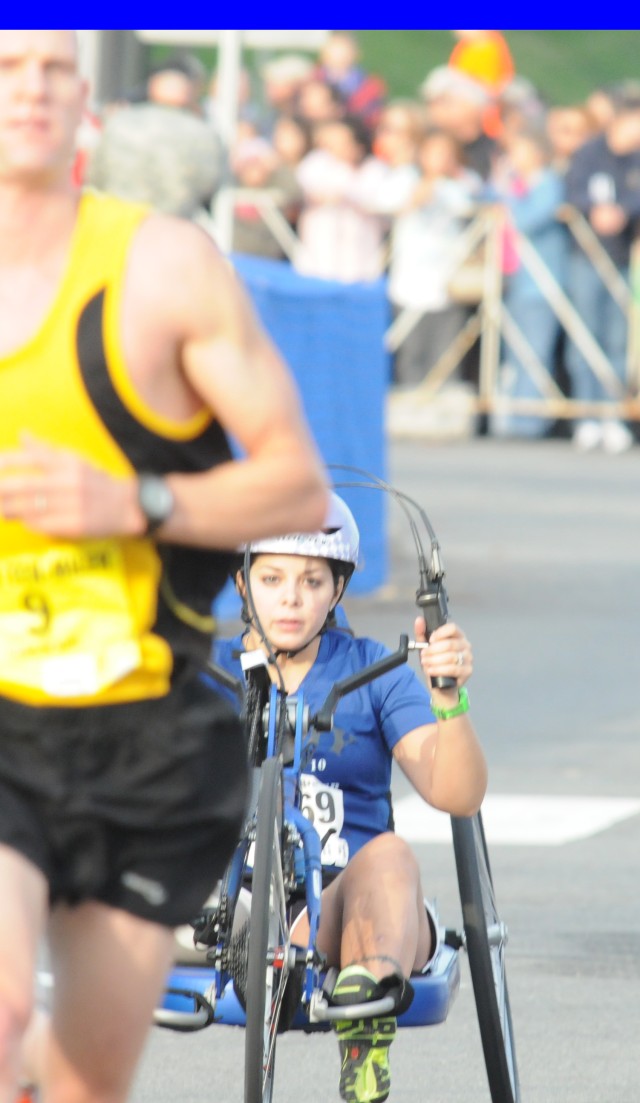
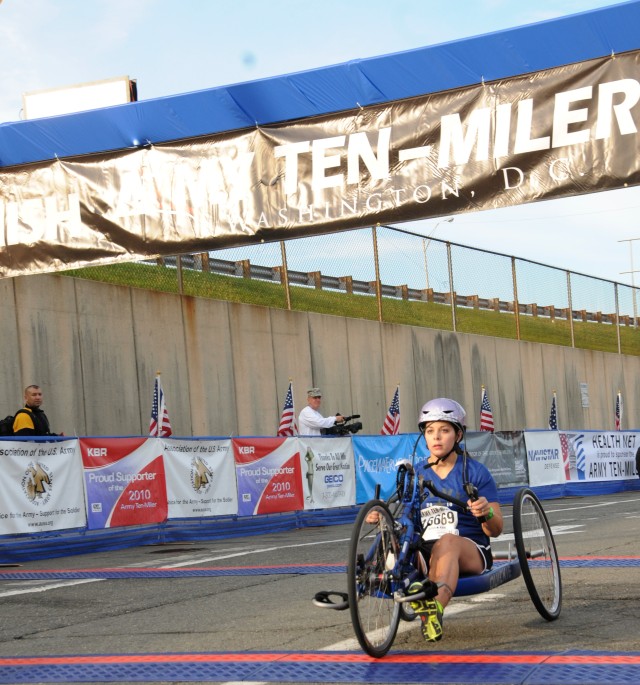
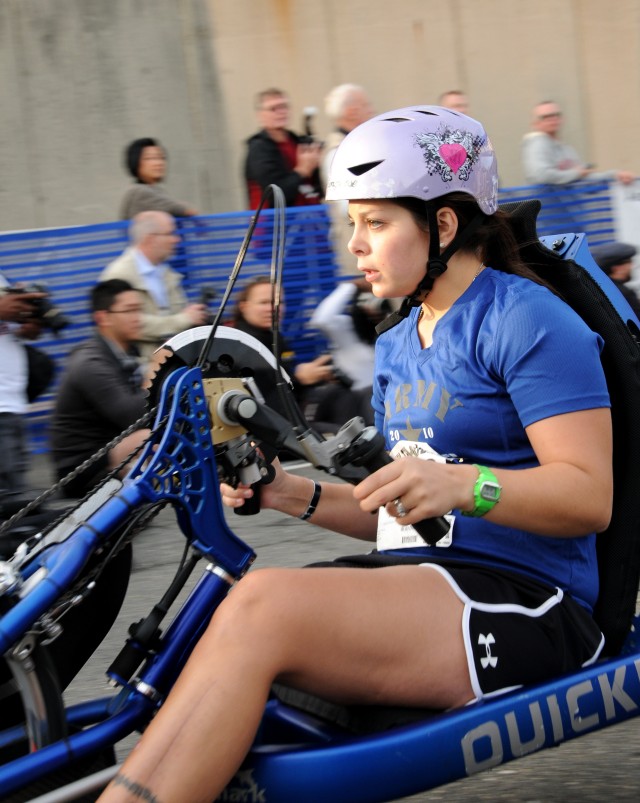
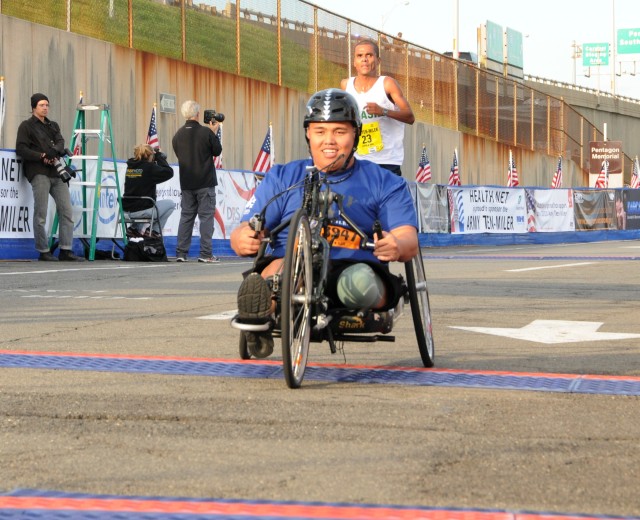
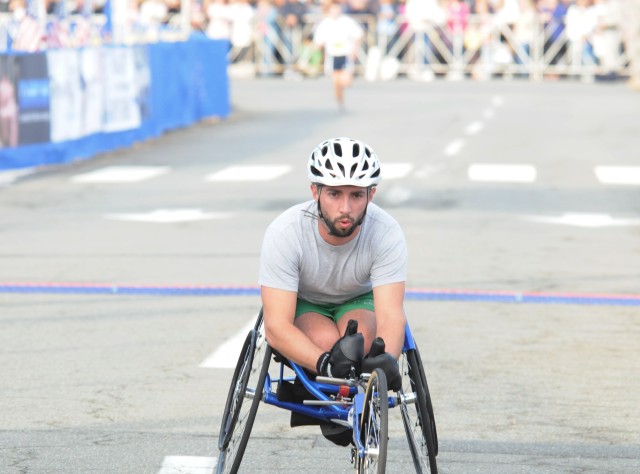
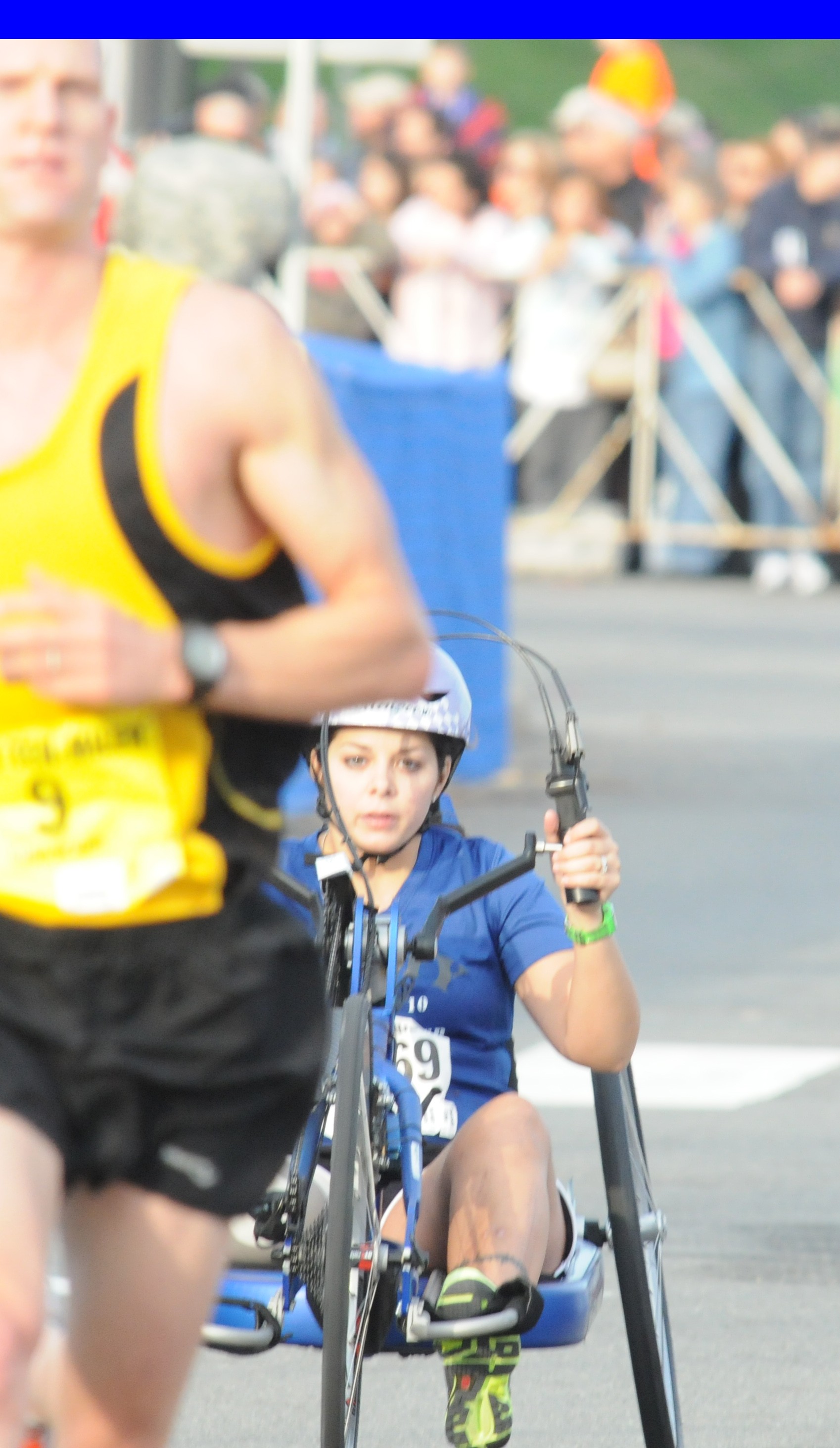
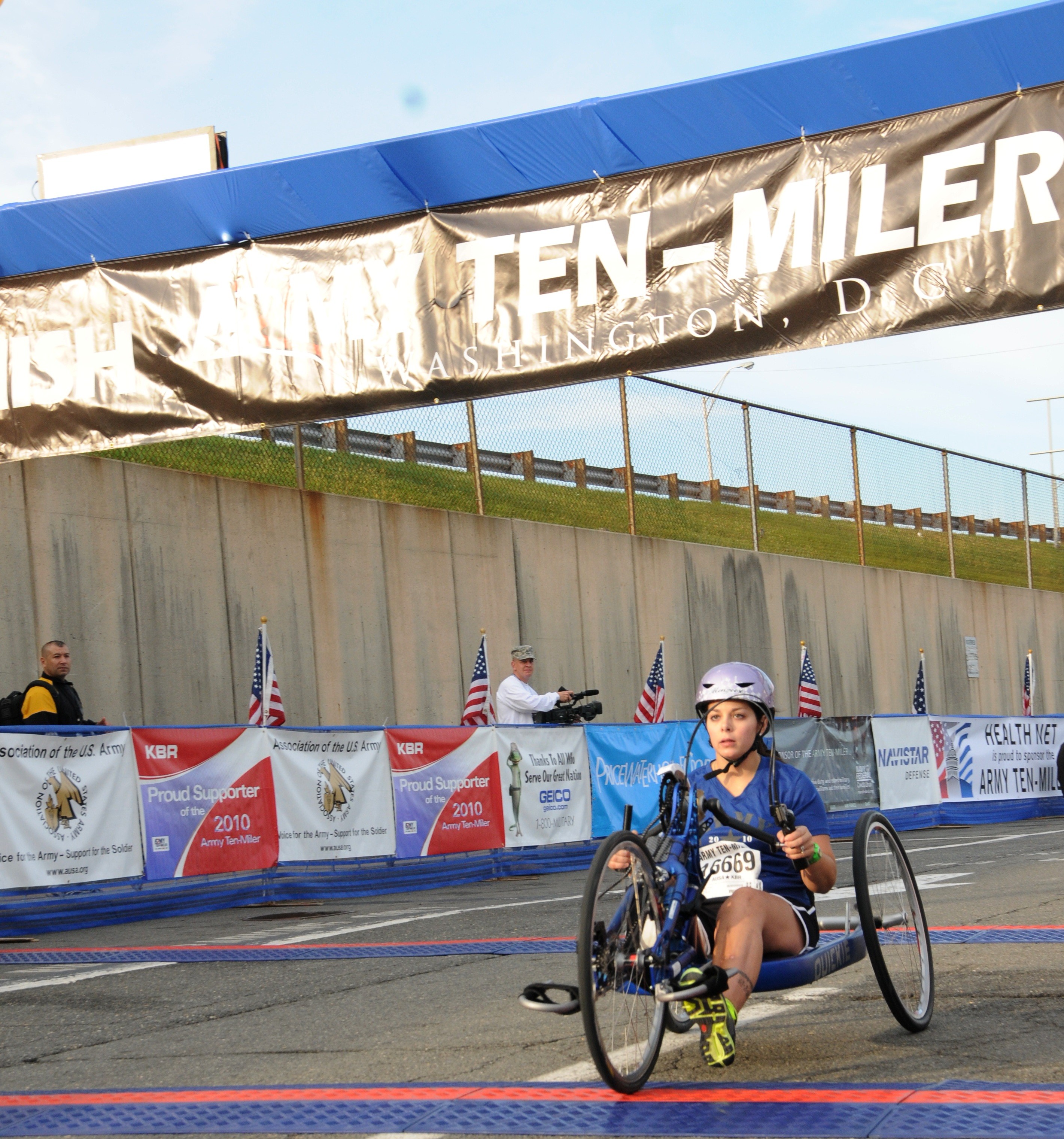
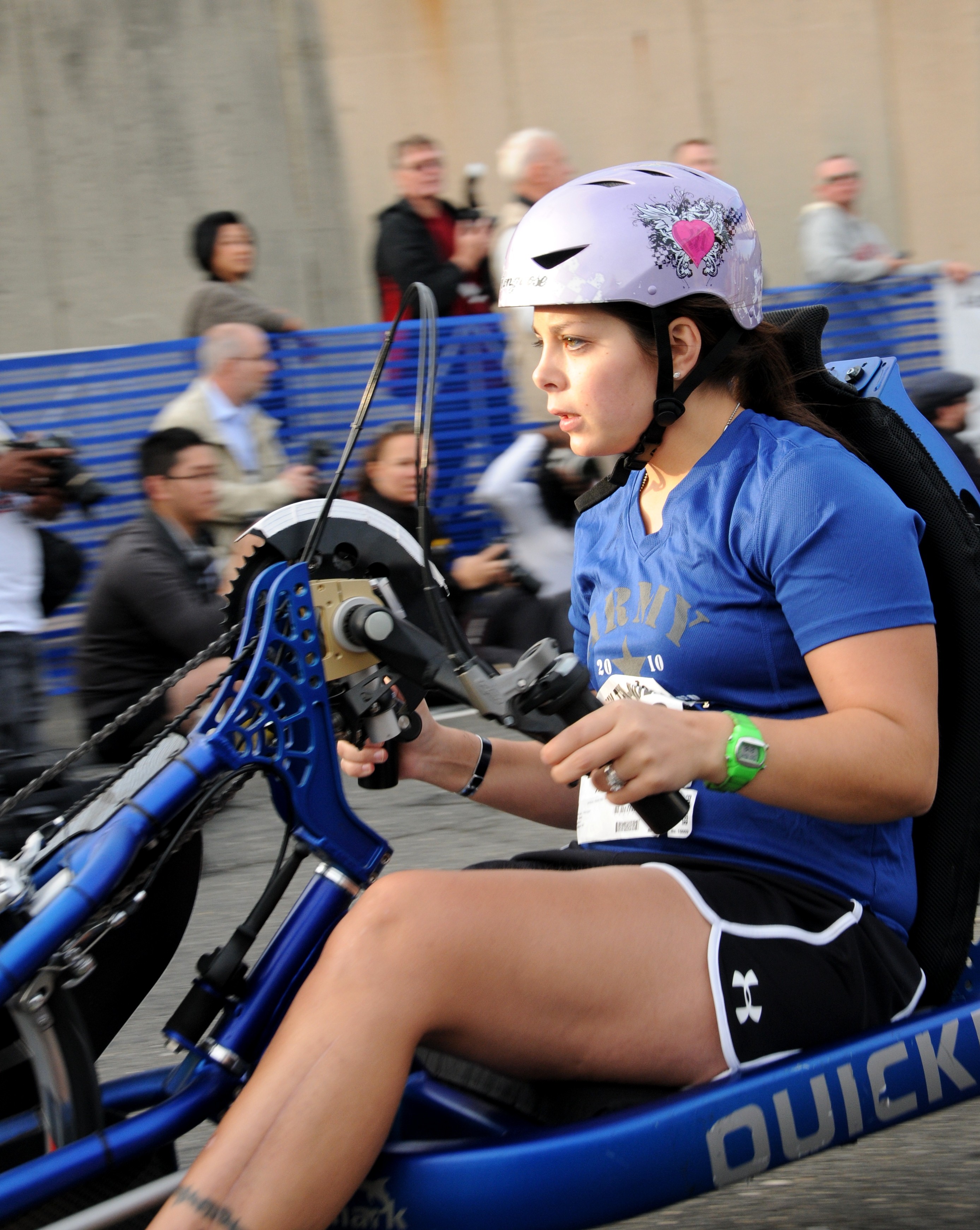
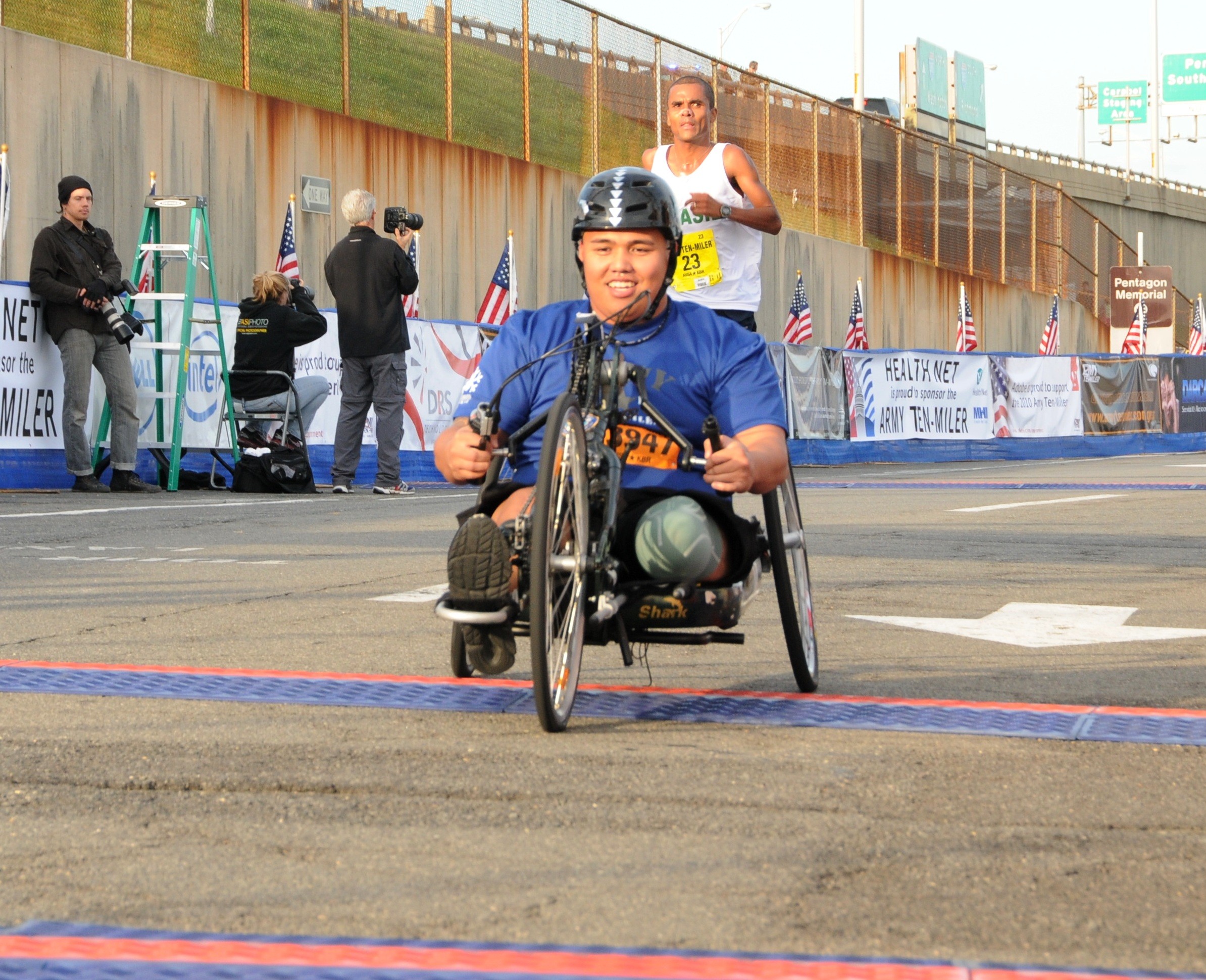
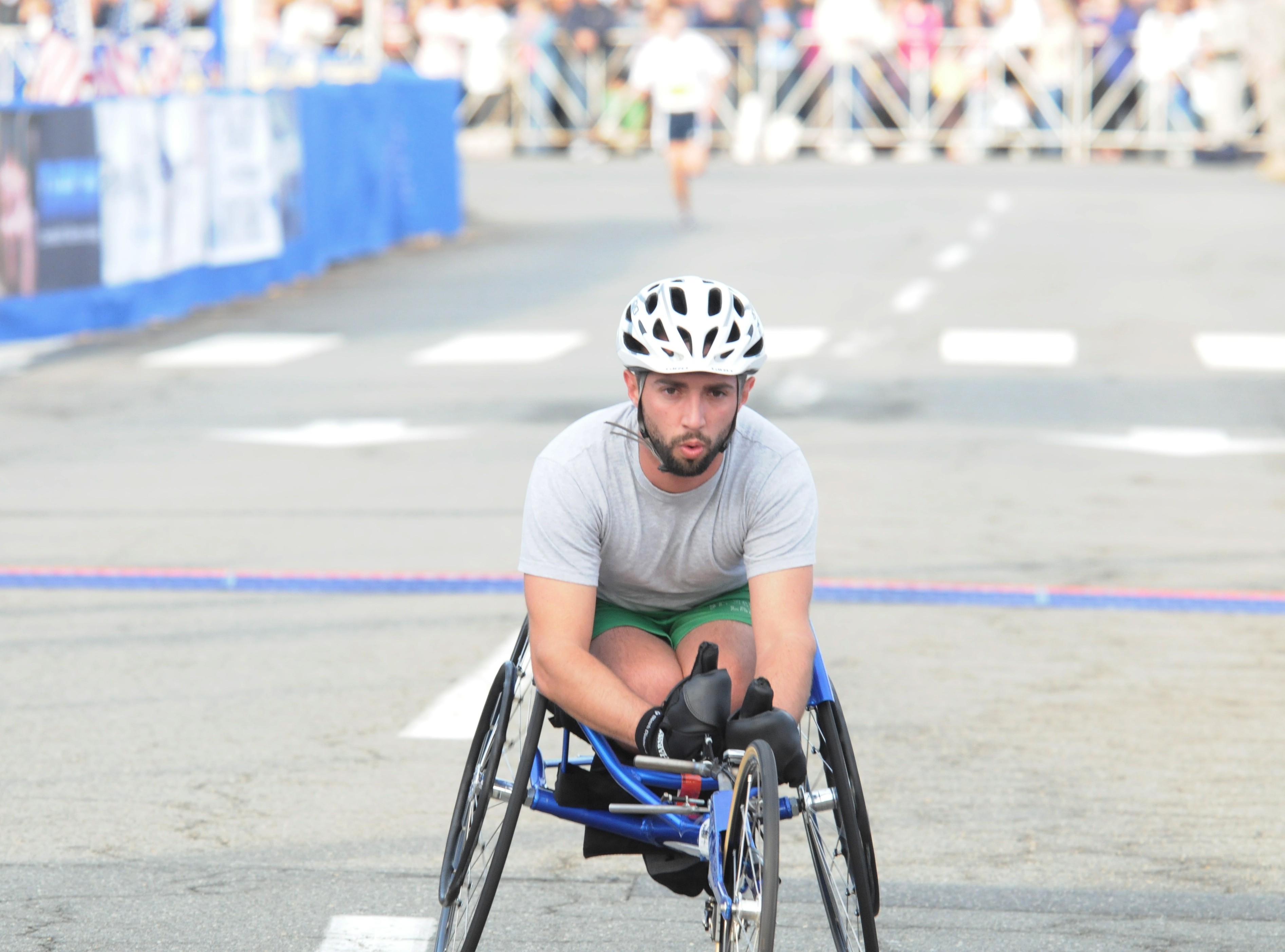
Social Sharing